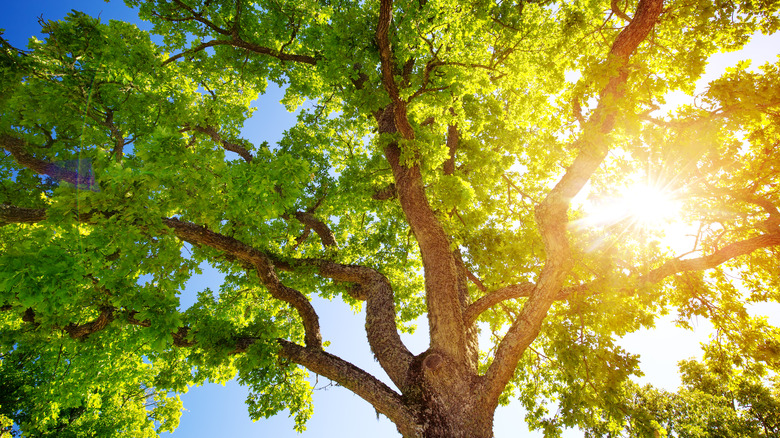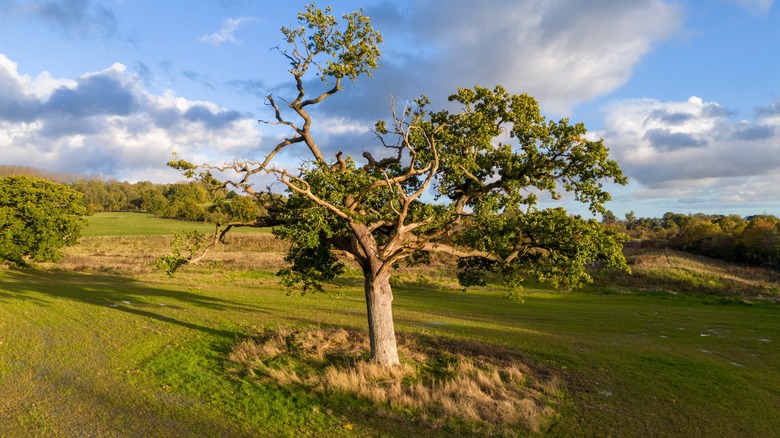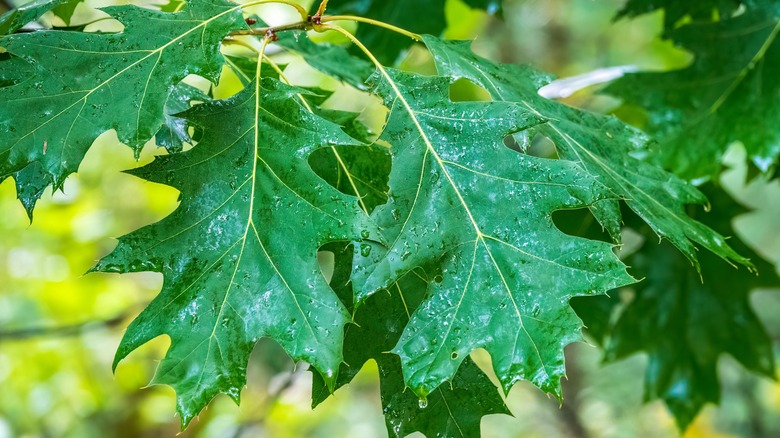The Underlying Disease That May Be Causing Oak Tree Leaves To Turn Yellow
If you have a majestic and stately oak tree (Quercus spp.) growing in your yard, you'll know that the leaves will naturally change color in the fall before they drop off your deciduous tree. This common tree will attract all kinds of butterflies to your garden so you want to ensure that you take care of it to keep it nice and healthy. But if the leaves start to turn yellow during the tree's normal growth seasons, this is cause for concern. There has been a noticeable death and decline of mature oak trees in the United States particularly in the mid Atlantic, the southern New England, and the Southeastern states, which has been attributed to oak decline or oak dieback.
Oak decline disease is not just limited to one particular species and has been observed in numerous different trees with the most severe outbreaks noted in red, pin, scarlet, white, and black oaks. There appears to be multiple causes of this disease, resulting in a complex problem attributed to environmental stresses such as drought, waterlogging, and frost, as well pest infestations. Once the disease is present, the trees will suffer dieback and eventual death.
Symptoms associated with oak decline
Oak decline basically affects trees that are under stress. One of the most easily spotted symptoms are chlorosis or yellowing of the leaves. Chlorosis is when normally green leaves turn yellow due to the lack of chlorophyll. This can result from stresses such as drought, soil compaction, inadequate drainage, and the tree's inability to take up nutrients due to high alkaline soils. Chlorosis is fairly easy to spot because the leaves will be pale but still have dark green veins. The yellow leaves may remain on the tree for some time before eventually dropping off.
Other symptoms a sick oak tree might exhibit are fewer or smaller leaves, and the growth of sprouts on the main branches of the tree. But before you will even notice these symptoms, you will see a dieback of the upper half to 1/3 of the tree, starting from the tips of the branches. Another symptom you might witness is your tree producing new leaves in the same season after the yellow leaves have dropped off. If this happens, you're likely to see dieback the following year as the disease is quite slow in its progression and it could take your tree around two to five years to eventually die. That's why it's important that you learn how to grow and care for your oak tree correctly in order to prevent it from becoming stressed and diseased.
What causes oak decline and how can you prevent it?
Since oak decline is mainly initiated by unfavorable environmental conditions, trees older than 70 years are more susceptible than younger trees because the latter can more easily recover after being stressed. Once the tree is stressed, it's open to attacks by both fungal diseases such as armillaria which attacks the roots, and hypoxylon which can attack the stems. Weakened oak trees can also be infested with insects such as the borers. The damage caused by these insects limits the internal flow of water and nutrition from the roots up to the crown of the tree.
The best way to stop your oak tree from succumbing to oak decline is to keep the tree as healthy as possible. With this disease, prevention is the key. During extended dry periods when the tree is actively growing, make sure that you provide it with enough water. This is especially important in spring if the winter has been relatively dry. You can apply a thick layer of mulch around the base of the tree to help keep the moisture in the soil. It's also recommended that you keep the root zone of the tree free from any plantings, heavy foot traffic or groundcover materials such as concrete. Apart from this, you'll also want to make sure that you're familiar with the best time of year to prune your oak tree so that this doesn't cause unnecessary stress to the tree.


